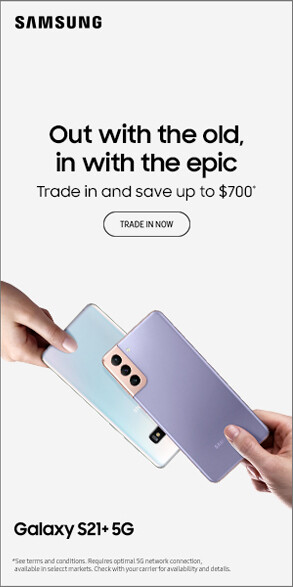
When you’re in the market for a new phone, you’ll quickly find yourself bombarded with technical jargon and acronyms like RAM, processor speed, megapixels, and mAh. These specifications can be confusing, yet understanding them is crucial to selecting the right device for your needs. In this guide, we’ll break down some of the most common phone specifications to help you make a well-informed choice at Gadgetclub Witham.

1. Processor (CPU): The Phone’s Brain
The processor, or CPU (Central Processing Unit), is essentially the brain of your phone. It determines how fast and smoothly the device can run applications, load web pages, and handle multitasking.
- Processor Speed: Measured in GHz (gigahertz), this number indicates how quickly the processor can execute tasks. The higher the GHz, the faster the processing.
- Cores: Modern smartphones often have multicore processors (e.g., dual-core, quad-core, or octa-core). More cores can allow the phone to handle multiple tasks at once, so if you’re a multitasker, look for a higher core count.
What to Look For: If you’re using your phone for basic tasks (browsing, social media, calling), a mid-range processor will suffice. However, for gaming or heavy app usage, a higher-speed, octa-core processor may be more suitable.
2. RAM: Your Phone’s Short-Term Memory
RAM (Random Access Memory) works as your phone’s short-term memory, temporarily storing information so that it’s readily accessible for ongoing tasks. The amount of RAM your phone has can affect its multitasking abilities and responsiveness.
- Typical RAM Sizes: Entry-level phones might have 2-4GB of RAM, while mid-range models feature 6-8GB. High-end devices can have 12GB or more.
What to Look For: If you’re running multiple apps or switching between them frequently, go for at least 6GB of RAM. For standard usage, 4GB is typically sufficient, while power users or mobile gamers may benefit from 8GB or more.

3. Storage: Space for Your Apps, Photos, and Files
Storage capacity is the total space your phone has for apps, photos, videos, and system files. It’s typically measured in gigabytes (GB) or terabytes (TB).
- Types of Storage: Phones may offer internal (built-in) storage or support external storage via SD cards.
- Common Storage Sizes: Entry-level models usually start with 32GB, while mid-range and premium models offer 64GB, 128GB, or more. Higher-end models can have up to 512GB or even 1TB.
What to Look For: For basic use, 64GB should be enough, but if you store a lot of media files, consider at least 128GB. Opt for phones with external storage support if you want the flexibility to expand storage later.
4. Battery Capacity (mAh): How Long Will Your Phone Last?
Battery capacity is measured in milliampere-hours (mAh) and determines how long your phone will last on a single charge. However, the battery life depends on various factors beyond capacity, including screen size, processor efficiency, and personal usage.
- Common Capacities: Budget phones may have around 3000mAh, while high-end devices commonly offer 4000mAh to 5000mAh or more.
What to Look For: If you’re a light user, a 3000mAh battery should suffice. For moderate to heavy use, 4000mAh+ is ideal. Consider looking into phones with fast-charging or wireless charging if convenience is a priority.
5. Screen Resolution and Size: Visual Quality and Comfort
Screen resolution and size determine how sharp and comfortable your phone’s display will be. Resolution is measured in pixels (e.g., 1080p, 1440p), while screen size is usually in inches.
- Resolution: Higher resolutions (Full HD, 2K, or 4K) provide clearer images and are ideal for media consumption.
- Size: Larger screens (6 inches or more) are great for gaming or watching videos, but smaller screens (around 5 inches) are more compact and easier to handle.
What to Look For: For most people, Full HD resolution (1080p) and a screen size around 6 inches strike a balance between quality and usability. If you’re an avid mobile gamer or movie watcher, you may prefer higher resolution and a larger display.
6. Camera Specs: Beyond Megapixels
Many people assume that a higher megapixel count means a better camera, but there’s more to it. Camera quality depends on other factors like aperture, sensor size, and additional features.
- Megapixels (MP): This measures resolution, but higher megapixels don’t necessarily guarantee better quality.
- Aperture: A lower aperture number (e.g., f/1.8) allows more light into the camera, improving low-light performance.
- Additional Features: Look for optical image stabilization (OIS), night mode, or wide-angle lenses if you want versatility.
What to Look For: For everyday photography, 12-16MP with a wide aperture (f/1.8 or lower) works well. Consider additional features like OIS or night mode if photography is a priority for you.
7. Operating System (OS): The Software That Powers Your Phone
The OS controls the overall look, feel, and functionality of your phone.
- iOS: Exclusive to Apple devices, known for its simplicity, security, and seamless ecosystem.
- Android: Offers more customization, with options ranging from basic to highly advanced.
What to Look For: Choose iOS if you prefer a consistent, user-friendly experience or own other Apple devices. Go for Android if you want flexibility and a wider range of device options.
Conclusion
Understanding phone specifications can make a huge difference in choosing the right device. By knowing the basics of processor speed, RAM, storage, battery capacity, screen resolution, camera, and operating system, you’re better equipped to find a phone that aligns with your lifestyle and needs. Visit Gadgetclub Witham to explore a range of devices and get expert advice tailored to your preferences.




